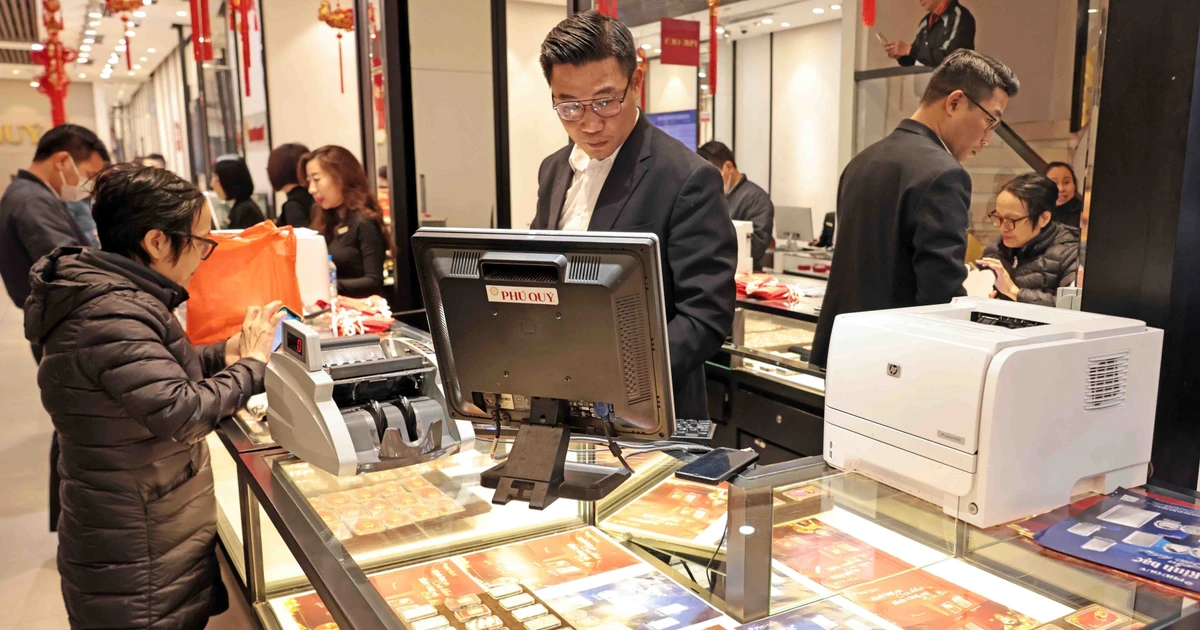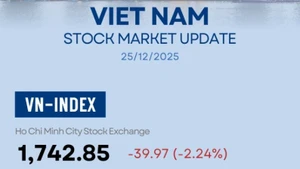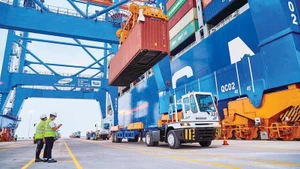An inevitable trend in the digital ecosystem
Instead of going to transaction counters, preparing numerous documents, and waiting a long time for approval, customers now only need a few online steps to complete the borrowing process. This helps save time and social costs while expanding access to capital for all groups.
Vietnamese commercial banks have simultaneously invested heavily in technology, integrating artificial intelligence (AI), big data, biometrics, e-contracts, and digital signatures into lending procedures. As a result, transactions are becoming increasingly secure, fast, and convenient. Beyond payments, digital technology has penetrated deeply into credit appraisal, risk management, and customer behaviour analysis. Associate Professor Dr. Dang Ngoc Duc, Head of the Institute of Financial Technology, Dai Nam University, said: “The integration of AI, Big Data, and Machine Learning into credit approval helps reduce risks, speed up application processing, and enhance customer experience. The period 2021–2025 is the pivotal stage for digital credit to develop more transparently and comprehensively.”
The integration of AI, Big Data, and Machine Learning into credit approval helps reduce risks, speed up application processing, and enhance customer experience. The period 2021–2025 is the pivotal stage for digital credit to develop more transparently and comprehensively.
Associate Professor Dr. Dang Ngoc Duc, Head of the Institute of Financial Technology, Dai Nam University
In practice, many banks have recorded outstanding loan growth via digital channels far exceeding expectations, while expanding their services to rural, remote, and isolated areas where access to traditional financial services is limited. One of the groups benefiting most from online lending is small and micro enterprises (SMEs). At present, SMEs account for up to 97% of the total number of enterprises in Viet Nam, contributing about 40% of the workforce, but they face difficulties in accessing capital due to insufficient records, complicated procedures, and high borrowing costs.
To address these challenges, many digital connection platforms have been implemented. A typical example is MISA Lending, a digital financial ecosystem based on enterprises’ accounting data, e-invoices, and actual cash flows.
Nguyen Thi Ngoan, Chief Financial Officer of MISA, said: With nearly 400,000 enterprises using its cloud services, MISA Lending provides “live” data, allowing banks to assess risks in real time, limit bad debts, and accelerate disbursement. To date, MISA has connected with 11 banks, granted credit lines of nearly 16 trillion VND, and disbursed about 30 trillion VND, with a successful borrowing rate of 30%, 10 times higher than the traditional model.
Alongside the business sector, commercial banks are also stepping up the digitalisation of lending operations. MBBank is currently one of the pioneers in comprehensively implementing online lending. Le Thi Thuy Ha, Project Director of Digital Lending, MBBank Digital Banking Division, said: On the MBBank App, the bank is serving more than 33 million individual customers, with 100% of consumer unsecured loans registered and disbursed entirely online.
Notably, more than 90% of production and business loans have also been disbursed via digital channels, with cumulative sales exceeding VND 165 trillion in just the first eight months of 2025. In addition, the Biz MBBank platform serves more than 350,000 corporate customers, with 100% of micro-enterprises receiving capital through online channels. All transactions use e-contracts and digital signatures.
Improving legal frameworks, ensuring system security
The rapid development of online lending also raises urgent requirements for the legal framework and system security. The State Bank of Viet Nam has recently issued documents to improve the legal corridor, such as Circular 06/2023 supplementing provisions on e-lending under Circular 39/2016, facilitating credit institutions in digitalising services. In particular, Decree 94/2025/ND-CP on controlled testing mechanisms has paved the way for peer-to-peer (P2P) lending. This is the first time Viet Nam has allowed real-world trials but under strict supervision, both expanding capital channels and ensuring system safety.
Associate Professor Dr. Dang Ngoc Duc noted: When national data on population, taxation, and credit are connected, banks can accurately assess repayment capacity in real time, thereby expanding credit access even to customers who have never had a borrowing history.”
Protecting data in the payment sector and ensuring the legitimate rights of users of financial and banking services in the online environment are very important.
Pham Anh Tuan, Director of the Payment Department under the State Bank of Viet Nam.
According to Pham Anh Tuan, Director of the Payment Department under the State Bank of Viet Nam, protecting data in the payment sector and ensuring the legitimate rights of users of financial and banking services in the online environment are very important. Banks need to continue investing in upgrading security infrastructure, regularly updating new technology solutions, and building cybersecurity monitoring systems applying artificial intelligence (AI). In particular, as international payment connectivity and online lending are expanded, the issues of cybersecurity and data protection become increasingly complex due to the requirement for interoperability among multiple systems with differing security standards.
Training and retraining banking human resources, from senior management to operational staff, is the key to ensuring the smooth operation of online credit platforms. At the same time, it is necessary to build a workforce capable of interdisciplinary coordination across finance, technology, and risk management. This is the decisive factor enabling banks to both master professional expertise and swiftly adapt to digital technology.
















